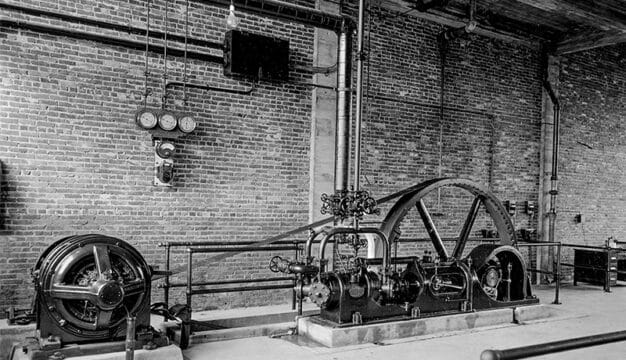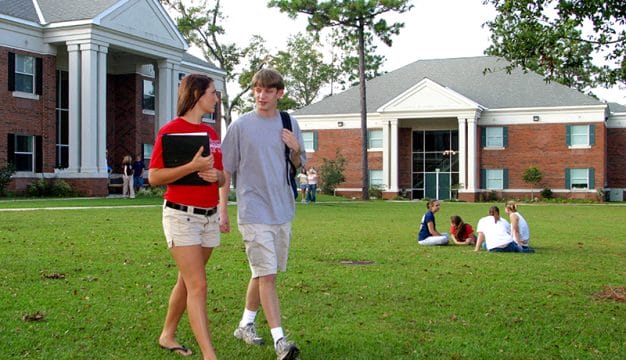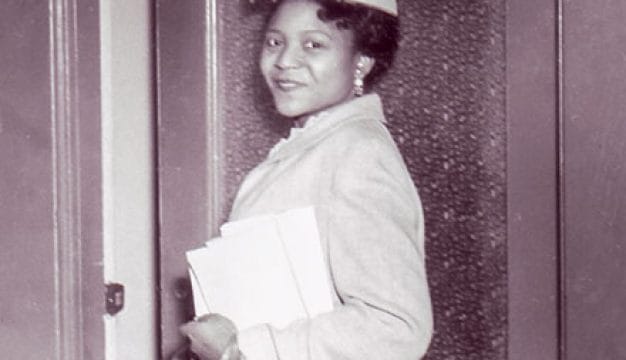Huntingdon College
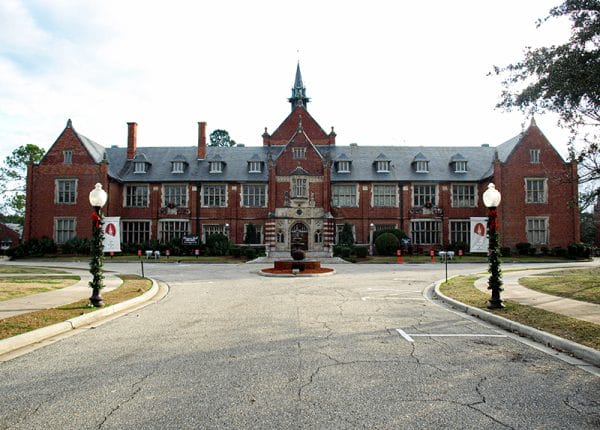 Flowers Hall
Huntingdon College is a small private Methodist liberal-arts college located in Montgomery, Montgomery County. Originally serving only white women, the college now opens its doors to men and women of different ages, races, and religions from many parts of the world, though the majority are from Alabama and surrounding areas. Enrollment has varied significantly over time but currently stands at about 1,100 students, including traditional students and individuals enrolled in the Center for Professional Studies. Recognizing its ties with the Methodist Church, the college honors Selina Hastings, the Countess of Huntingdon, and a major supporter of Methodism in England during the late eighteenth century.
Flowers Hall
Huntingdon College is a small private Methodist liberal-arts college located in Montgomery, Montgomery County. Originally serving only white women, the college now opens its doors to men and women of different ages, races, and religions from many parts of the world, though the majority are from Alabama and surrounding areas. Enrollment has varied significantly over time but currently stands at about 1,100 students, including traditional students and individuals enrolled in the Center for Professional Studies. Recognizing its ties with the Methodist Church, the college honors Selina Hastings, the Countess of Huntingdon, and a major supporter of Methodism in England during the late eighteenth century.
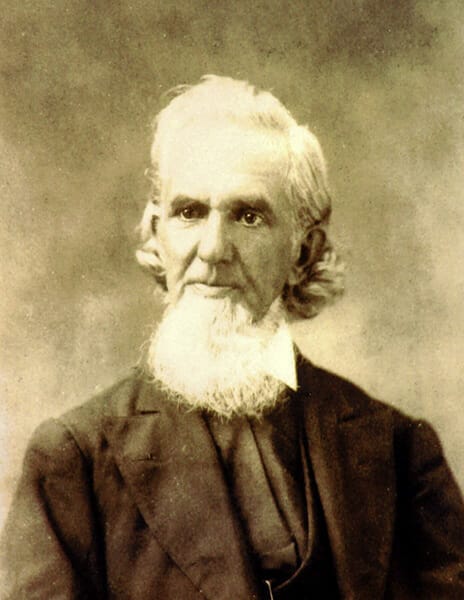 Andrew A. Lipscomb
The college currently consists of the School of Business and Professional Studies, the School of Science and Mathematics, and the School of Arts and Humanities, which together offer more than 20 academic majors. Huntingdon successfully places many graduates in professional and other advanced schools and assists its other graduates in finding meaningful employment.
Andrew A. Lipscomb
The college currently consists of the School of Business and Professional Studies, the School of Science and Mathematics, and the School of Arts and Humanities, which together offer more than 20 academic majors. Huntingdon successfully places many graduates in professional and other advanced schools and assists its other graduates in finding meaningful employment.
Huntingdon was originally founded in 1854 in Tuskegee, Macon County, as Tuskegee Female College by Andrew Adgate Lipscomb, a Methodist minister and educator who went on to serve as chancellor of the University of Georgia and professor of philosophy at Vanderbilt University. The school was founded during a time of relative prosperity, as cotton was booming in 1854, but like many southern colleges fell victim to economic disruption during the Civil War and its aftermath. In 1872, Huntingdon faced closure, but the Alabama Conference of the Methodist Episcopal Church took control of the school and renamed it the Alabama Conference Female College.
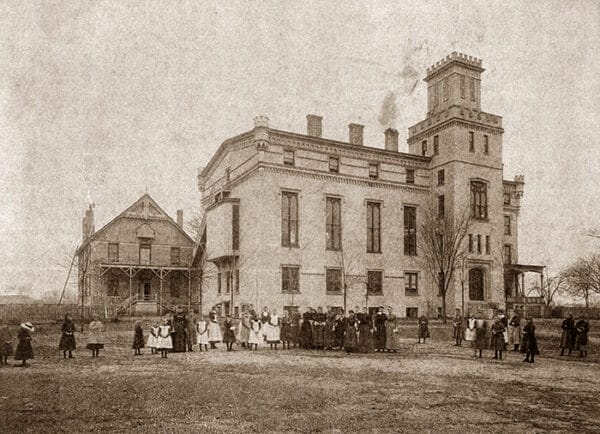 Alabama Conference Female College
John Massey became president in 1876 and in 1906, facing economic hardship again, led the effort to relocate the school. The board of trustees, in consultation with the Joint Educational Commission of Alabama and the North Alabama Conferences of the Methodist Church, agreed that Alabama Conference Female College should be moved to Montgomery, a city that would be able to provide more financial support and more students. The school acquired 58 acres in the Cloverdale neighborhood in 1907 and moved in 1909. In 1910, a fire destroyed the records of the school’s years in Tuskegee.
Alabama Conference Female College
John Massey became president in 1876 and in 1906, facing economic hardship again, led the effort to relocate the school. The board of trustees, in consultation with the Joint Educational Commission of Alabama and the North Alabama Conferences of the Methodist Church, agreed that Alabama Conference Female College should be moved to Montgomery, a city that would be able to provide more financial support and more students. The school acquired 58 acres in the Cloverdale neighborhood in 1907 and moved in 1909. In 1910, a fire destroyed the records of the school’s years in Tuskegee.
The first building constructed at the new campus was John Jefferson Flowers Memorial Hall, named for a supporter of Methodist education whose heirs donated $50,000 to the school. The hall, which opened in 1909, housed the administrative offices of the college as well as classrooms and several other functions. That same year, the school was renamed the Woman’s College of Alabama. Flowers Hall became and has remained for almost a century the symbol of the college and bears over its front entrance the school’s motto: “Enter to Grow in Wisdom; Go Forth to Apply Wisdom in Service.” It was designed by Englishman H. Langford Warren in the collegiate style of Oxford and Cambridge, England, modeling Flowers Chapel (renamed Ligon Chapel in 1999) after St. James Cathedral at Cambridge. Famed landscape architect Frederick Law Olmsted Jr. created the original design for the campus but died before he could oversee its implementation. Additional landscaping and buildings, many Gothic as well, were added over the years, creating a beautiful campus of rolling hills, a natural amphitheater, and lush greenery. The campus was a setting for the 2003 movie Big Fish, standing in for Auburn University.
 Woman’s College of Alabama
The Great Depression brought additional financial problems when endowments, investments, and campaign pledges shrank or disappeared. Responding to its own needs and to those of men unable to attend schools outside of Montgomery, the college admitted the first male student in 1934 under president Walter D. Agnew, and the school was renamed Huntingdon College the following year. In 1936, the school was placed on probation by the Southern Association of Colleges and Schools (SACS) because of low faculty salaries and library spending and high debt.
Woman’s College of Alabama
The Great Depression brought additional financial problems when endowments, investments, and campaign pledges shrank or disappeared. Responding to its own needs and to those of men unable to attend schools outside of Montgomery, the college admitted the first male student in 1934 under president Walter D. Agnew, and the school was renamed Huntingdon College the following year. In 1936, the school was placed on probation by the Southern Association of Colleges and Schools (SACS) because of low faculty salaries and library spending and high debt.
In 1938, the trustees hired Hubert Searcy, a young and energetic president and financial genius who guided the college to pay off its debt. Searcy was able to regain SACS accreditation in 1940. After World War II, he took advantage of educational opportunities under the GI Bill, increasing enrollment, expanding the faculty both in number and certification, and updating the curriculum. Also under his tenure, the institution went coeducational in 1946, enrolling veterans returning from World War II financed by the GI Bill. The number of male students grew slowly but today equals that of females.
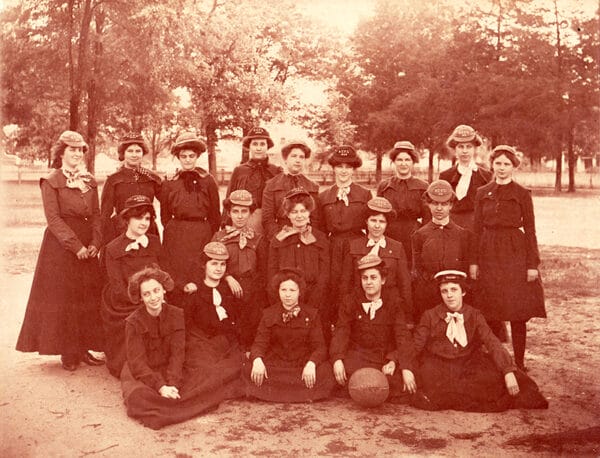 Alabama Conference Female College Basketball Team
The end of the twentieth century witnessed other transformations at the college. For the first time, a woman was chosen president. Wanda Durrett Bigham presided from 1993 to 2003 and raised funds for the purchase of the former Cloverdale Junior High School building and its 13 acres in 2002, landscaping improvements on the main campus, renovation of the Dining Hall, construction of Blount Hall for student residences, and a major renovation of Flowers Hall and its chapel. Bigham also encouraged travel and study abroad by providing financial assistance and had the college wired for computers. During her administration, the school transitioned to NCAA Division III and added several sports, including a football team in 2003.
Alabama Conference Female College Basketball Team
The end of the twentieth century witnessed other transformations at the college. For the first time, a woman was chosen president. Wanda Durrett Bigham presided from 1993 to 2003 and raised funds for the purchase of the former Cloverdale Junior High School building and its 13 acres in 2002, landscaping improvements on the main campus, renovation of the Dining Hall, construction of Blount Hall for student residences, and a major renovation of Flowers Hall and its chapel. Bigham also encouraged travel and study abroad by providing financial assistance and had the college wired for computers. During her administration, the school transitioned to NCAA Division III and added several sports, including a football team in 2003.
The twenty-first century saw change in the focus of the school as well as in the administrative structure. President John Cameron West, inaugurated in 2003, advocated a return to a mission of service and to a more standard curriculum. He reestablished a religion major with tracks in both graduate and seminary preparation and in Christian education. In addition, West promoted new scholarships for Methodist students and appointed a director of campus ministries to encourage worship services, group bible studies, and organizations. The percentage of freshmen who were Methodists doubled from 19 percent in the fall of 2004 to 38 percent in the fall of 2005. He established a college-wide administrative structure to unite and coordinate academic affairs, student life, admissions, and athletics and closed the main campus to automobiles to promote wider use and enjoyment of the historic Green.
Huntingdon was placed on probation by SACS in 2004 because of financial problems, but conditions have since improved.
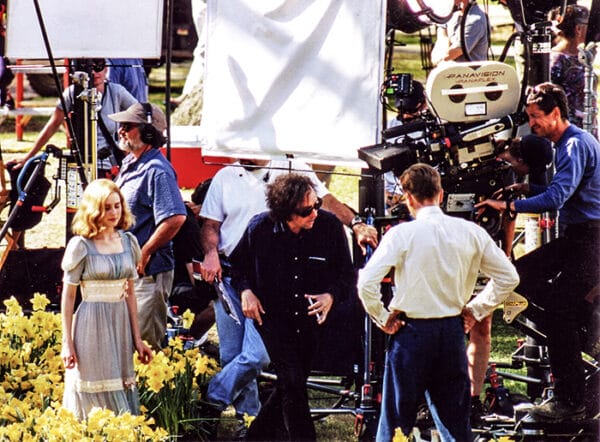 Big Fish at Huntingdon College
The college provides students and the community access to world-renowned lecturers in a variety of fields and recognized persons in the performing arts, as well as its own accomplished faculty and students. The faculty includes many instructors with terminal degrees, and small classes provide students the opportunity to interact with teachers and each other. Students may participate in school government and in many academic and social clubs and activities. While the college is associated with the Methodist Church, students of many faiths attend and partake in several spiritual organizations. Greek social organizations began in the late 1960s and now include two for men and three for women.
Big Fish at Huntingdon College
The college provides students and the community access to world-renowned lecturers in a variety of fields and recognized persons in the performing arts, as well as its own accomplished faculty and students. The faculty includes many instructors with terminal degrees, and small classes provide students the opportunity to interact with teachers and each other. Students may participate in school government and in many academic and social clubs and activities. While the college is associated with the Methodist Church, students of many faiths attend and partake in several spiritual organizations. Greek social organizations began in the late 1960s and now include two for men and three for women.
In sports, Huntingdon is represented by the Hawks and Lady Hawks clad in scarlet, white and pearl grey. The school fields six varsity NCAA Division III intercollegiate teams for men and five for women in the Great South Athletic Conference. Students also enjoy intramural sports, co-ed cheerleading, and a new marching band. Athletic activities and intercollegiate sports pre-date the coming of males to campus, but the fielding of a football team in 2003 excited debate. Some supporters have questioned the recent emphasis on football and accompanying activities, but President West backs it as a part of Huntingdon’s holistic philosophy of uniting preparation of mind, body, and spirit.
Further Reading
- Ellison, Rhoda Coleman. History of Huntingdon College: 1854-1954. Tuscaloosa: University of Alabama Press, 1954.
